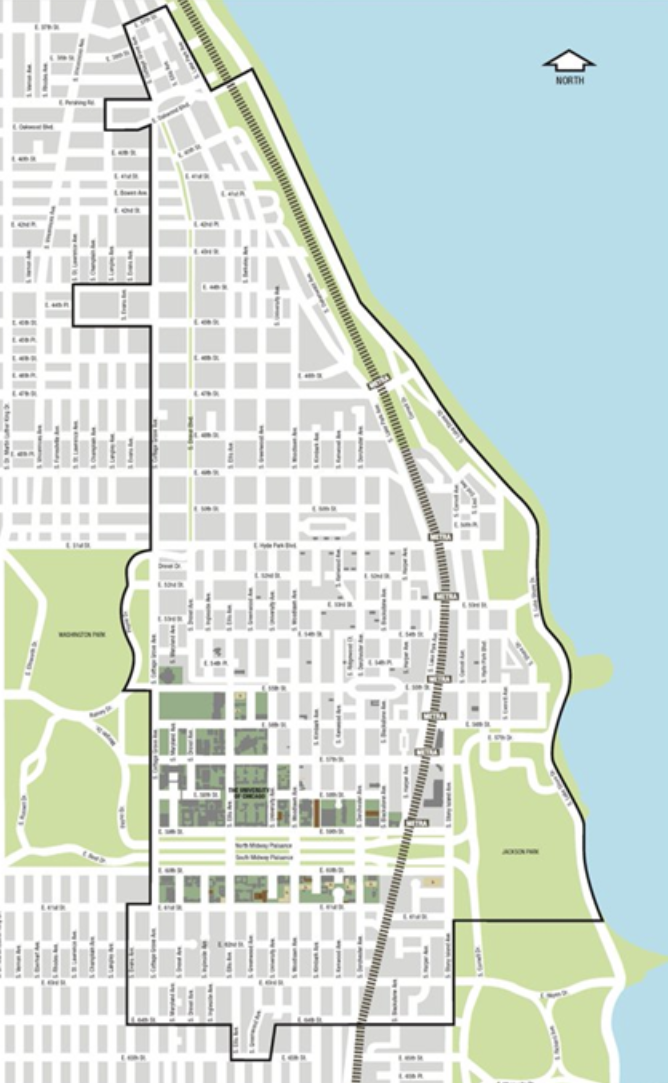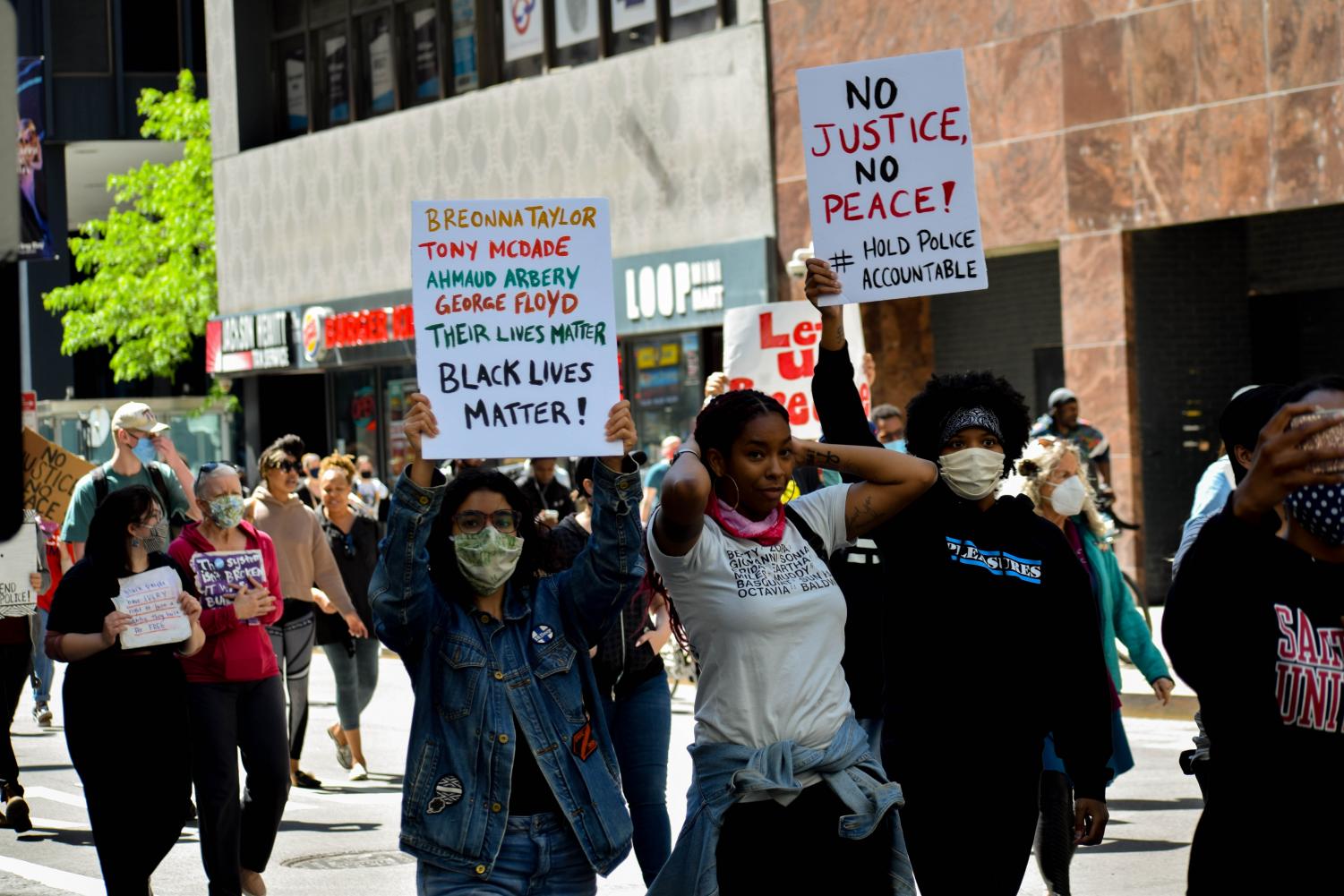Content Warning: Discussion of police brutality, violence, and racism.
Breonna Taylor, Tony McDade, George Floyd, and Ahmaud Arbery. These are examples of Black people killed by racist and/or police violence whose names have been in the headlines within the last month alone. Taylor was a cis woman and McDade was a trans man, which highlights that those of us at intersections of multiple marginalized identities will likely not have our stories as widely shared, while at the same time being at greater risk of police violence.
Protests this past weekend have occurred across the country against anti-Black racism and for charging police officers who murdered Black people. Chicago itself is a place that has historically used police to murder Black residents. Rekia Boyd, Laquan McDonald, and Harith Augustus are a few of the victims of Chicago Police Department-involved deaths.
The Invisible Institute and Forensic Architecture investigated the use of police violence leading to the murder of Harith Augustus, and wanted to also understand the historical context of policing in Chicago. They interviewed Adam Green, a historian at the University of Chicago, who began by discussing the 1919 Race Riots. That summer at Bronzeville's 29th Street Beach, which was unofficially segregated into white and Black swimming areas, a white man threw a rock at a Black teen named Eugene Williams causing him to drown. Tensions escalated after police arrived and refused to arrest the white man who killed Williams, instead arresting a Black man. The ensuing racial violence lasted for nearly a week, after which 38 people were dead, 23 of them African-American, and about a thousand residents, mostly Black people, were left homeless after their homes were torched.
When discussing policing in the aftermath of the 1919 Riots, Green talked about the establishment of a “dead zone” around Bronzeville. “That decision, a policy decision, which could objectively be understood in the moment as having some merits, was one that ultimately resulted in the first citywide scale example of differential policing.” Green added that this led to differential policing becoming instituted, embraced, and coded into the CPD. This would be carried through to enforce and normalize segregation, from restrictive covenants to redlining to contract selling. These policies have limited Black people’s mobility to move to different parts of the city and contributed to making Chicago an extremely segregated city.
Overpolicing of Black residents in Bronzeville would continue to play out in subsequent decades when police heavily patrolled and punished loitering and jaywalking around the housing projects that once lined State Street. This was also in evidence on the West Side, when Commander Jon Burge’s organized the arrests and torture of mostly Black people. In more recent years, CPD allegedly operated an interrogation site out of a facility in the West Side Homan Square neighborhood with little oversight.
Even during the COVID-19 pandemic, a Block Club Chicago study found that police only arrested people for social distancing violations on the majority-POC South and West sides, despite Mayor Lightfoot claiming police are enforcing the rules evenly across the city.
The upcoming Obama Presidential Center will be built within Jackson Park in the Woodlawn community, a historically Black neighborhood. It's a location that will not only be patrolled by the CPD, but also the University of Chicago Police Department, one of the largest private police forces in the country. In a city where police have been known to force large numbers of law-abiding Black teens out of downtown streets and parks and onto buses and trains to take them away from the area, having a cultural amenity in Woodlawn monitored by a private police force is counterintuitive to the idea of free and open public space.

Police have always discriminated against and harmed Black people’s mobility and freedom in public spaces. I cannot count how many times my friends and I have messaged each other to make sure we got home safe. We have thought twice about calling the authorities for help with mental health emergencies for fear that police might show up and potentially escalate the situation.
Chicago should continue implementing more equitable transit-oriented development, building more bus lanes, opening more streets and plazas to pedestrians -- these are all good things in a vacuum. However, Black people will not be able to fully benefit from these initiatives as long as we continue to be overpoliced while using public services and disproportionately locked up in Cook County Jail, and as long as Black trans and cis women continue to have their safety threatened by officers. But until Black people are free and safe in our own city there will be no mobility justice.
To work towards a mobility justice framework for Black residents, where we are safe in our streets and transportation networks, there must be less dependence on policing. Streetsblog Chicago has previously discussed why overpolicing our transit system doesn't make residents safer. Tragically, the very day that Mayor Lori Lightfoot announced a strategy to add dozens of police officers to the CTA in response to a string of violent robberies, officers shot and critically injured a man after detaining him for walking between train cars. Streetsblog had previously argued that hiring civilians trained in de-escalation to monitor 'L' cars would be more effective for promoting safety on the CTA.
There have also been recent movements to defund the police department, headed by Chicago activists and alderfolk, so that the CPD's massive portion of the city budget can be reallocated to basic needs such as better transit in Black communities, more affordable housing, eradicating food deserts, reinvesting in neighborhood schools, and reopening closed mental health clinics. CPD’s budget has consistently increased over the past eight years from $1.3 billion in 2012 to this year’s almost $1.8 billion, so that police funding now makes up 40 percent of Chicago’s total budget. Investing in these necessities would support low-income Black residents and reduce the need for police in our neighborhoods.
North Side, majority-white neighborhoods are not inherently safer than majority-Black and Latinx communities on the South and West sides. They are safer because their residents have the privilege of access to more resources. Rather than Chicago's current overpolicing tactics, leveling the playing field through equitable public policy is the best way to achieve safety in all neighborhoods.
The Chicago Reader has discussed local campaigns for police abolition. In practice this would begin with having less reliance on cops, and more focus on community members protecting each other and working under a restorative justice framework to heal tensions. One such example in Chicago has been violence interruption groups that engage with residents and use “eyes on the street” tactics so that they are intertwined with the fabric of the neighborhood. Local interruption groups have proven effective, but lost their funding during the recent Illinois budget stalemate. While Mayor Lightfoot earlier this year announced plans to fund community-based violence prevention, the budget of $6 million annually is not enough support.
This moment, when citizens are taking to the streets to protest police violence against people of color, is an opportunity to redefine the role of police and center Black lives, our freedom, and our movement through spaces. If you're a transportation professional or advocate looking for ways that you can support BIPOC (Black and Indigenous People of Color) within a mobility framework, check out Streetsblog USA's new post, "POC Transportation Leaders Call for Antiracist Action from Their Community" featuring statements from mobility justice leaders like Tamika Butler, Naomi Doerner, and Keith Benjamin.





